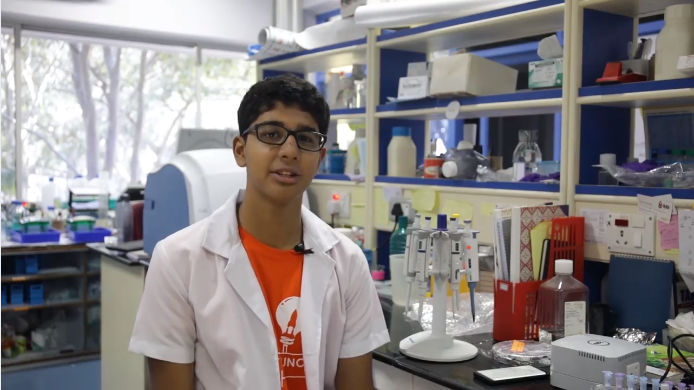Fosfomycin
Mechanism of Action
In general, antibiotics exert their bactericidal or bacteriostatic activity by targeting the microorganism’s essential physiological and/or metabolic functions, including protein, DNA, RNA, or cell wall synthesis and cell membrane organization. Fosfomycin has a unique mechanism of action in which it irreversibly inhibits an early stage of bacterial cell wall biosynthesis.
In order to exert its bactericidal activity, fosfomycin must reach the bacterial cytoplasm. To enter the cell, fosfomycin uses the active transport proteins GlpT and UhpT by mimicking both glucose-6-P (G6P) and glycerol-3-P (G3P). Thus, fosfomycin can be imported into the bacterial cell via the hexose monophosphate transport system (which is induced by G6P) and via the L-a-glycerophosphate transport system (which is induced by G3P).
Once in the cytoplasm, fosfomycin acts as an analog of phosphoenolpyruvate (PEP) and binds MurA (UDP-GlcNAc enopyruvyl transferase), thereby inactivating the enzyme enolpyruvyl transferase, an essential enzyme in peptidoglycan biosynthesis. Thus, fosfomycin prevents the formation of UDP-GlcNac-3-O-enolpyruvate from UDP-GlcNAc and PEP during the first step in peptidoglycan biosynthesis, thereby leading to bacterial cell lysis and death. In addition, fosfomycin also decreases penicillin-binding proteins.
Antibacterial Activity
Because both Gram-negative and Gram-positive bacteria require N-acetylmuramic acid for cell wall synthesis, fosfomycin is as a broad-spectrum antibiotic with activity against a wide range of bacteria, including Escherichia coli, Proteus mirabilis, Klebsiella pneumoniae,Enterobacter spp., Citrobacter spp., and Salmonella typhi. However, due to a paucity of preclinical and clinical data, no universally accepted minimum inhibitory concentration (MIC) values have been defined for the susceptibility and resistance to fosfomycin; overall, the MIC for susceptibility ranges from ≤32 to ≤64 mg/L, and the MIC for resistance ranges from >32 to >256 mg/L, according to the Clinical and Laboratory Standards Institute (CLSI) and the European Committee on Antimicrobial Susceptibility Testing (EUCAST).
MDR P. aeruginosa and A. baumannii are Gram-negative pathogens primarily responsible for nosocomial (i.e., hospital-acquired) infections, particularly in intensive care units. A systematic review of microbiological, animal, and clinical studies using non-fermenting Gram-negative bacilli concluded that using fosfomycin in combined therapy may provide a safe and effective therapeutic option for treating infections due to MDR P. aeruginosa. The clinical efficacy of fosfomycin against MDR-bacteria, including P. aeruginosa, has been suggested in patients with severe infections and critical conditions, and in cystic fibrosis patients with infective pulmonary exacerbations. However, when used as monotherapy, P. aeruginosa should generally be regarded resistant to fosfomycin and its use in P. aeruginosa infections should ideally be reversed for additional evaluation in clinical studies because the increased bacterial killing of combination therapy does not prevent the emergence of fosfomycin resistance. In contrast, nearly all isolates of A. baumannii are resistant to fosfomycin, with a MIC90value higher than 512 mg/L and there are no data on its use in combination therapy
In Vitro Synergy between Fosfomycin and Other Antibiotics
The use of combined antimicrobial therapy is recommended in specific patient populations and indications, including critically ill patients who are at high risk for developing an MDR bacterial infection and patients with a P. aeruginosa infection. In this regard, fosfomycin has an in vitro synergistic effect of up to 100% when combined with other antimicrobial agents.
The synergistic effect between fosfomycin and β-lactam antibiotics is proposed to arise from the inhibition of cell wall synthesis at separate steps; fosfomycin inhibits the first enzymatic step, whereas β-lactam antibiotics inhibit the final stage in the cell wall synthesis process. In addition, fosfomycin may modify the activity of penicillin-binding proteins, which may account for the synergistic effect between fosfomycin and β-lactam antibiotics. Another study found that the synergistic effect between fosfomycin and ciprofloxacin is due to ciprofloxacin-mediated damage to the outer membrane, which increases the penetration and activity of fosfomycin. With respect to P. aeruginosa, several in vitro studies found synergy between fosfomycin and a variety of other antibiotics, including aztreonam, cefepime, meropenem, imipenem, ceftazidime, gentamycin, amikacin, ciprofloxacin, and others. In addition, a few studies measured the synergistic effect of combining fosfomycin with amikacin or sulbactam against A. baumannii strains, providing evidence that these drugs might provide an effective combination therapy for infections with this pathogen. Fosfomycin also has synergistic effects when combined with other antibiotics for treating methicillin-resistant S. aureus, Streptococcus, Enterococcus, and Enterobacteriaceae species. In addition to increasing antibacterial efficacy, fosfomycin can also reduce toxicity associated with other antibiotics such as aminoglycosides, glycopeptides, and polymyxin B, as lower doses of these drugs can be prescribed.
Current Clinical Indications for Fosfomycin and Potential Future Applications
Fosfomycin disodium is currently available in only a few European countries—namely, Spain, France, Germany, the United Kingdom, the Netherlands, Austria, and Greece—where it is approved for the treatment of soft-tissue infection and sepsis. A Fosfomycin disodium adult dose of 12–24 g daily is commonly administered in 2–4 separate infusions.
Due to is extensive tissue penetration, fosfomycin has emerged as a potential therapy for treating infections in the central nervous system (CNS), soft tissues, bone, lungs, and abscesses. Fosfomycin has high penetration into the interstitial fluid of soft tissues, reaching 50–70% of the levels measured in plasma, reaching sufficiently high levels to eliminate relevant pathogens. Moreover, Schintler et al. reported that fosfomycin might also be effective in treating “deep” infections involving the osseous matrix.
With respect to CNS infections, Pfausler et al. reported that three daily IV doses of 8 g provided a steady-state concentration of 16 mg/L in the cerebrospinal fluid (CSF) for more than 90% of the interval between doses. Moreover, the concentration of fosfomycin in the CSF can increase by nearly threefold with meningeal inflammation. With respect to suppurative lesions, Sauermann et al. reported that repeated doses of IV fosfomycin can yield a concentration of 32 mg/L fosfomycin in the abscess, albeit with high inter-individual variability in the PK of fosfomycin in the abscess fluid.
MDR bacteria such as ESBL-producing bacteria and carbapenem-resistant bacteria are still susceptible to fosfomycin, and fosfomycin is used in combination therapy for treating these infections.
The repurposing of fosfomycin based on its activity against MDR Enterobacteriaceae is an important strategy for addressing the ever-present threat of antimicrobial resistance. The AUC/MIC seems to be the dynamically linked index for determining resistance suppression. In this respect, it is essential to develop optimal dosing strategies for each MDR Enterobacteriaceae species based on PK/PD data; moreover, additional dosing regimens may need to be developed for targeting different tissue sites of infection in order to prevent the development of resistance. Another promising approach is the use of combination therapy; for example, combining fosfomycin and meropenem yielded a significant synergistic effect but also yielded a significantly additive effect in the fosfomycin-resistant subpopulation.
Currently, the FOREST study group is comparing the efficacy of combining fosfomycin with meropenem in treating urinary tract infections (UTIs) with ESBL-producing E. coli.
















